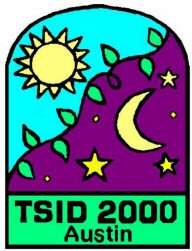Educational Interpreting Track
First Things First
TSID 2000

Educational Interpreting TrackFirst Things FirstTSID 2000 |
 |
This workshop is designed to help alleviate some of the anxiety associated with sign-to-voice interpreting. Come learn about a model of interpretation from the spoken language interpretation field, some common triggers of sign-to-voice interpreting errors, and how you can assess yourself to find common error patterns.
Religious interpreters formed the backbone of RID in its early years at the national and state levels. Many of us can remember excellent interpreters who came from the churches and the clergy. This important aspect of the profession has been neglected and relegated to the fringes of the Association. Recently, this has changed as RID has come back to recognize the difficulty of interpreting in religious settings and the importance of the soul and spirit of the Deaf Community. The history, role and function, attributes/characteristics, current issues, and solutions to common problems will be discussed.
This workshop is designed for interpreters and transliterators who can understand the entire signed message, but often fail to understand the fingerspelled word on the first try. The workshop provides theoretical information about process related to fingerspelled word recognition and the anxiety that often accompanies this process. The nature of the fingerspelled word is explored. Practical exercises in fingerspelled word recognition are included. A new approach to improving the skills, which underlie the cognitive process of fingerspelled word recognition, will be demonstrated and explained. This workshop does not require any expressive fingerspelling and does not require any sign to voice work. It provides a safe and informative way to learn more about fingerspelled word recognition strategies.
This workshop addresses the need for interpreters working in educational settings to have knowledge of the educational process in addition to knowledge of the interpreting process and the content areas for which they will interpret. Interpreters who have a vocabulary to discuss the educational process behind the content are able to become active participants in the partnership with other education professionals in order to provide the best possible learning experience for deaf and hard of hearing students. Suggested questions regarding instructional methods and curriculum relevant to the partnership between the interpreter and instructor will be presented.